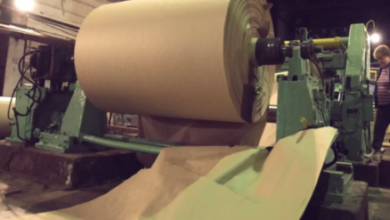“Driving Toward the Future: The Rise of Driverless Tractor-Trailers on American Roads”

Driverless tractor-trailers are poised to become a reality on American roads, spearheaded by Pittsburgh-based Aurora Innovation Inc. The company has conducted testing of an 18-wheel self-driving truck on a three-lane track alongside the Monongahela River, showcasing its ability to maneuver around obstacles such as trash cans and road debris. Equipped with 25 laser, radar, and camera sensors, Aurora’s autonomous semi aims to commence transporting goods on Interstate 45 between Dallas and Houston using 20 driverless trucks by the year’s end.
READ: OAS to Step in as Mediator in Guatemala’s Power Transition Crisis
Driverless Tractor-Trailers
Within the next three to four years, Aurora and its competitors aim to deploy thousands of self-driving trucks on public highways across America. The objective is to enhance the efficiency of goods delivery by enabling trucks to operate nearly continuously without rest breaks.
Nevertheless, the prospect of an 80,000-pound driverless truck traveling at speeds exceeding 65 mph on a super-highway raises concerns. A recent AAA poll revealed that 66% of Americans would feel apprehensive about riding in an autonomous vehicle.
Despite these apprehensions, trucks equipped with Aurora’s systems will commence carrying loads for FedEx, Uber Freight, Werner, and other companies in less than nine months. Most companies, including Aurora, plan to initiate freight routes in Texas, where inclement weather conditions are infrequent.
While autonomous vehicles were once envisioned as the future of urban ride-hailing, progress in this area appears to have stalled. As General Motors’ Cruise robotaxi unit grapples with a significant crash and Alphabet’s Waymo faces resistance to its California expansion, it is self-driving trucks that are surging ahead to become the first AI-driven vehicles on public roads in substantial numbers.
However, this shift is not devoid of concerns. With federal regulation lagging, the onus of ensuring the safety of these unmanned trucks largely falls on the companies themselves. Aurora and others assert that their self-driving vehicles are safer than human-driven counterparts due to extensive testing. They argue that the vehicles’ sensors provide superior awareness compared to the human eye, are immune to fatigue or distraction, and are unaffected by substances.
While potential safety benefits are acknowledged, Phil Koopman, a vehicle automation researcher at Carnegie Mellon University, emphasizes the inevitability of computer errors and underscores the importance of quality safety engineering in real-world performance.
During demonstrations, Aurora’s autonomous trucks adeptly navigated mock road hazards, detecting them from over a quarter-mile away. Since 2021, Aurora’s self-driving trucks have safely transported freight for over 1 million miles on public roads, with only three minor incidents attributed to errors by other drivers.
Looking ahead, Aurora anticipates profitability by late 2027 or early 2028, contingent upon deploying thousands of trucks and earning a per-mile fee from hauling freight. Despite financial pressures, Aurora pledges not to compromise on safety.
Rivals of Aurora, including Plus.ai, Gatik, and Kodiak Robotics, share similar intentions to dispatch driverless cargo trucks on the roads soon. Gatik hints at potential deployment within the next year, while Kodiak’s CEO emphasizes the more favorable environment for self-driving vehicles on freeways compared to cityscapes.
However, apprehensions linger regarding this technological advancement, as voiced by individuals like Kent Franz, who express concerns about potential accidents and safety issues associated with autonomous vehicles.






